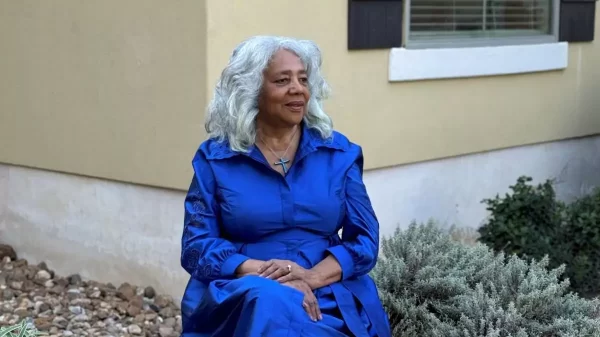
By Blackdoctor
Clinical trials are an important tool for understanding whether investigational medicines may work. Historically, clinical trials have lacked participant diversity which can lead to results that are not applicable to the broader population. People of different ages, genders, sexes, ethnicities, and races can respond differently to medical products. Without adequate representation in clinical trials, the effectiveness and safety of these products may not be fully understood for all groups.
Adrelia Allen has spent the last 22 years focused on addressing barriers to clinical trial participation and spearheading initiatives aimed at lowering health inequities. As Executive Director, Clinical Trial Patient Diversity at Merck, she is responsible for the strategy and execution of activities to help ensure diverse representation of patients in clinical trials. In this Q&A, Adrelia discusses the importance of diversity in clinical trials, how she learned about her father’s mistrust of the medical profession at the time of his cancer diagnosis, and why she thinks it’s critical that people from marginalized racial and ethnic groups consider participation in clinical research.
Why is diversity in clinical trials important?
Due to medical mistreatment, historically speaking, there continues to be distrust for the medical community and clinical research in many communities of color. As a result, people from these communities may be less inclined to participate in clinical trials. We cannot change history, but we can learn from its mistakes and try to do better.
Diversity in clinical trials is critical because different people may have different reactions to the same treatment based on their age, gender, weight, race, ethnicity, and other factors. By including people from diverse backgrounds, clinical trials can test if the investigational medicines are safe and work well for people from all different communities.
How did your experiences with your father’s diagnosis impact your work today?
Driving change in the clinical trial recruitment process so that clinical research is reflective of the patients that treatments are intended for, is my passion. As an African American working in clinical research, I’m committed to using my personal experiences and professional expertise to engage, educate and empower communities that have been underrepresented in research. I want to help people make informed decisions about health care and elevate the importance of participating in clinical research.
I understood the full scope of my father’s mistrust of the medical profession when he refused to have an MRI to confirm a diagnosis of prostate cancer. He was concerned he would be used
a “guinea pig.” It’s hard to change someone’s mind when they’ve seen and experienced things that make them fearful of how they will be treated based on the color of their skin. You can’t brush off those concerns. You have to address them head on with information and education and acknowledge and validate their feelings – and that’s exactly what I did. I had to reassure my father and really make him see that his rights were protected. I also explained to him how laws and standards have been put in place to help protect patients. I was able to help my father address his issues of medical mistrust, which made him more willing to engage with his health care providers.
Can you explain the FDA’s guidance on diversity in clinical trials for those who don’t know?
The U.S. Food and Drug Administration (FDA) issued guidance in 2016 to help ensure that people of different ages, races, ethnic groups and genders are included in clinical trials. While this was an important step toward increasing diversity in clinical trials, there is more progress to be made. For example, in 2019, the FDA approved 48 novel medicines to treat a variety of diseases and health conditions. Of the more than 46,000 participants in the clinical studies of those therapies, only 9% were Black or African American, compared with 72% who were white.1 Those numbers were even more discouraging for clinical trials related to cancer. Of the more than 3,500 patients who participated in clinical trials that led to the approval of 11 new cancer medicines, only 4% were Black or African American compared to 73% who were white.1
In 2022, the FDA expanded their guidance and recommended a proactive plan outlining actions to implement to support the goal of increasing the number of participants from underrepresented racial and ethnic populations in U.S. clinical trials.2
What factors have contributed to lack of diversity in clinical trials?
There are several factors that have contributed to the lack of diversity. To name a few, medical mistrust, language barriers, cultural beliefs, lack of awareness of clinical trials and socioeconomic factors can play a role. Additionally, some may have logistical challenges or financial burdens that may make it more difficult for them to take the time to participate in a clinical trial. Others may be fearful or distrusting of how they will be treated in a clinical trial. In other cases, people simply are unaware that clinical trials may be an option for them. We must act with intention to address the barriers and social determinants of health that limit access to clinical research and novel medicines or vaccines.
What can be done to improve diversity in clinical trials?
The lack of diversity in clinical trials is not a new challenge. My experience in clinical trial site management and clinical trial operations in the pharmaceutical industry has given me a broad view of the complexities involved. I believe a singular approach will not solve the challenge we face today. Rather, this requires collaboration between the pharmaceutical industry and various community organizations, colleges, universities, and professional organizations which engage with diverse groups of people. Together, we can work to address the barriers and social determinants of health that limit access to clinical research studying novel medicines and vaccines.
At Merck, we are working to help historically underrepresented communities access our clinical trials through a variety of activities, including:
- We use census data to prioritize placement of study sites in communities that have higher populations of people who have historically been underrepresented (e.g., Black Americans).
- We’re investing in training and tools for researchers, our teams, clinicians, and others at clinical trial sites to address the need for broader clinical trial access. Similarly, we support training for clinical research coordinators in underrepresented communities and seek physicians of color to become principal investigators.
- We now offer transportation assistance as a way to help reduce travel barriers for trial participants and have simplified the patient travel expense reimbursement process.
These are just a few of the broad array of tactics we implemented.
Do you have any suggestions for people who would like to have a conversation with a loved one about participating in a clinical trial?
It’s critical that clinical trials enroll people with diverse lived experiences, including women, people of different ages, ethnicities and nationalities, and socioeconomic backgrounds as well as individuals from gender and sexual minority communities. However, it can be challenging to convince others to consider participating.
When discussing with someone why they should consider enrolling in a clinical trial, you might want to provide them with the following information:
- They can learn more about their own health condition through health care professionals who are knowledgeable about their condition.
- They will have the opportunity to help researchers learn if the investigational treatments being studied are safe and work well.
Also, make sure they understand that they can leave a clinical trial at any time because participation is voluntary.
For more information about clinical trials, talk to your doctor or visit www.merck.com/trialdiversity.
_________________________________
- 2019 Drug Trials Snapshot Summary Report. U.S. Food & Drug Administration. https://www.fda.gov/media/135337/download. Accessed November 6, 2023.
- 2022 Diversity Plans to Improve Enrollment of Participants from Underrepresented Racial and Ethnic Populations in Clinical Trials Guidance for Industry. U.S. Food & Drug Administration. https://www.fda.gov/media/157635/download. Accessed November 6, 2023.









You must be logged in to post a comment Login